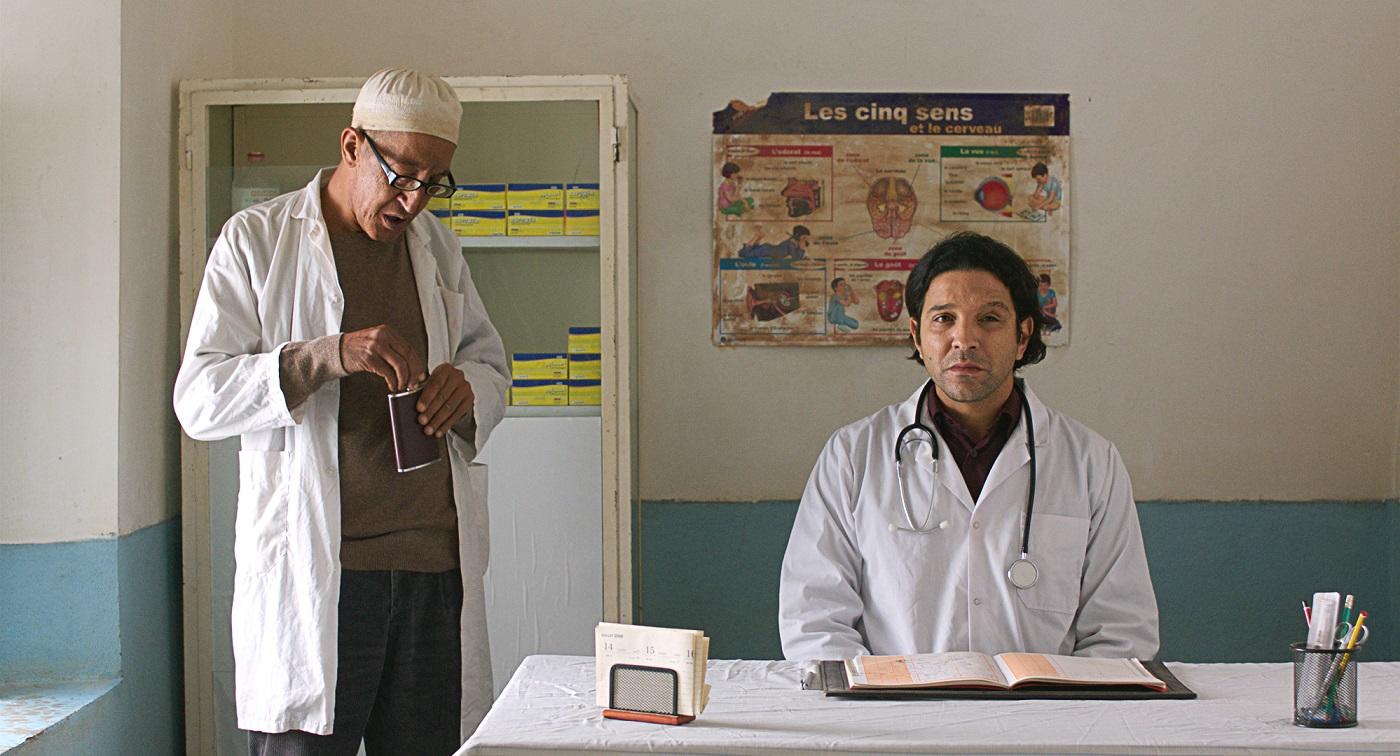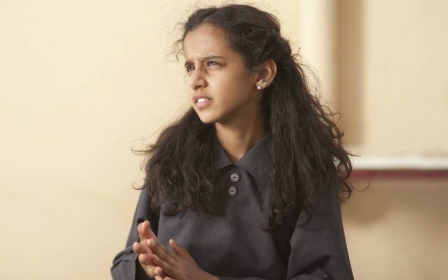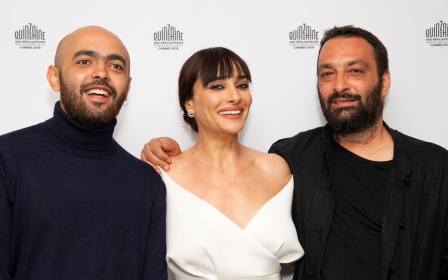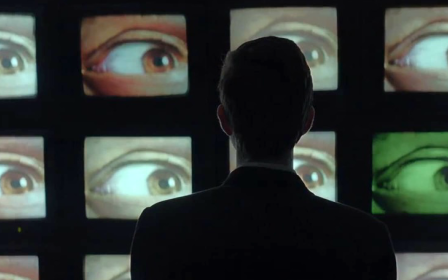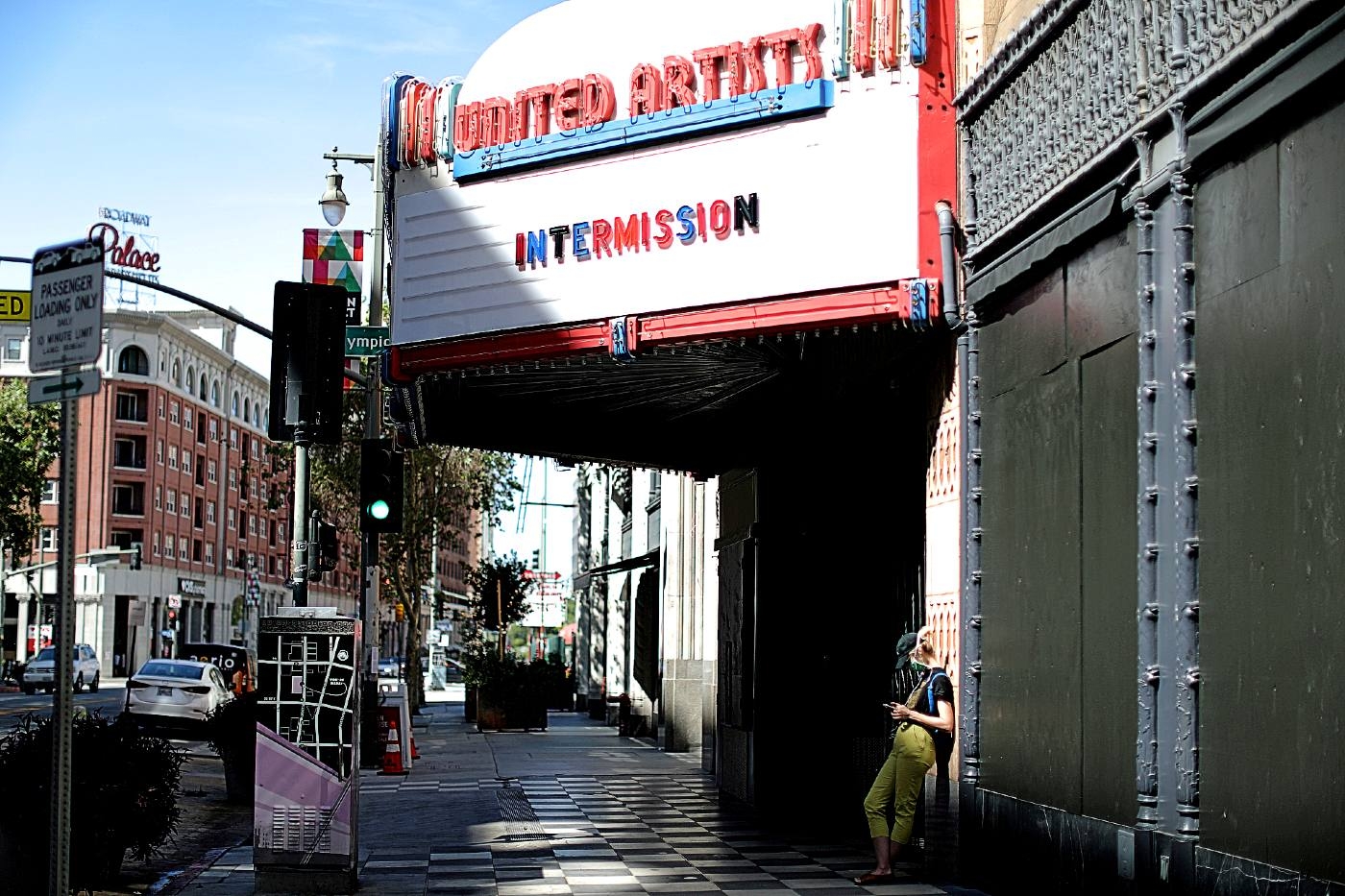
How I fell in and out of love with Middle East cinema
BERLIN - Back in January, when social distancing was a far-fetched concept that even the most apocalyptic sci-fi films had failed to come up with, my usually vivacious four-year-old niece fell ill. Playing with her toys was out of the question. So I asked her if she wanted to watch a movie.
For weeks, I had been trying to get her and her cousin to see Hayao Miyazaki’s My Neighbor Totoro, my favourite animated film, which until then was only their second non-English language feature (the first was Ponyo, another Miyazaki anime).
Totoro is a more challenging endeavour. Unlike the Disney pictures they’ve grown addicted to, it has no traditional narrative, no wisecracking sidekicks. The only villain is the illness that deprives Satsuke and Mei, the two heroic girls, of their mother.
My niece and I watched the film in one go. She was intimidated by the Susuwatari, the tiny dust-like spirits that inhabit the girls’ secluded home, but in awe of Totoro himself, a giant fluffy forest spirit. Throughout, she didn’t flinch or ask for a break or get distracted by the toys scattered around her.
New MEE newsletter: Jerusalem Dispatch
Sign up to get the latest insights and analysis on Israel-Palestine, alongside Turkey Unpacked and other MEE newsletters
She was fixated not just by the story but the film as a whole: the sweep of the images; the synthesis of sight and sound; the sincerity of emotions on display; and the unpredictability of proceedings.
I spent most of Totoro watching my niece watching the film with a mix of glee and melancholy. The wonder in her eyes reminded me of how I fell in love with movies when I was practically the same age as her, when I first experienced the awe that has been the guiding light for most of my life.
It is a fascination that has started to dwindle during the past few years. The ongoing pandemic has made me understand from where this cynicism stems and why I nonetheless still believe in the lasting power of the moving image.
Covid-19: The world stopped
A month later, I found myself back in my usual work cycle. Like most people working in the film industry, I wear multiple hats as a critic, festival programmer and script consultant. Most of the year I rove across Europe, the Middle East and the US.
My place of residence is Cairo, the city where I grew up and from which I’ve grown increasingly detached during the past eight years. I have friends scattered around the globe. Home is a very loose concept for me. I’m a digital nomad: I can work anywhere, and that’s what I've done. My life during the past five years has been nothing but an interminable transit with no destination.
Cannes, the mid-May highlight of the international film festival calendar, was approaching fast. In the industry, anticipation for new works by directors like Wes Anderson, Paul Verhoeven, Leos Carax and Yeon Sang-ho was starting to build.
But there were remarkably few films from the Middle East and North Africa that excited me. I was going through the motions, desperately searching for the next revelation that would restore my faith in contemporary cinema. Yet I could not overcome a growing fatigue about the moving image, a fatigue I never imagined I could suffer.
And then the world stopped. It began for me in Berlin, where I arrived on 19 February for the film festival, known as the Berlinale. I planned to leave a month later for my next business trip, the annual Qumra event in Doha, where industry professionals scout for the hottest projects from the Middle East and beyond. But on 3 March, Qumra was cancelled, forcing me to book a one-way flight back to Cairo for the end of the month.
Then, on 16 March, Egypt announced it was suspending air travel. Germany had begun to go into lockdown. I couldn’t catch a flight back to Cairo but was convinced that air travel would resume by the end of the month. It didn’t. All of a sudden, I found myself stranded in a rented flat in a different country.
Meanwhile an aura of finality was beginning to dawn on film. Cinemas closed. Major releases were shelved, although some went directly to home streaming. Productions were suspended. All summer festivals were cancelled, including Karlovy Vary, the Czech festival I’ve worked with for the past five years. Netflix boosted its worldwide subscribers by 15 million in one month. Binge-watching became the way to survive.
The future of the film industry now hangs in the balance, according to countless analyses. Despite this, new movies of all shapes and sizes will, in the long-term, continue to get made. They may not make it to cinemas but they will still find an audience amid the copious streaming platforms. But most analysts have overlooked one essential predicament now facing the industry.
There are far too many films being made – and certainly more than any market can contain. The global film system is broken. Even with the growing appetite for new content that was spurred by the worldwide lockdown, supply remains far higher than demand. And as the industry scrambles to escape this calamity, no one seems to be asking: do we need this many films to begin with?
I miss the era where 'everything mattered and nothing went by', as US critic A.O. Scott once put it
In 2000, 371 movies were released in the US and Canada – that figure had peaked at 878 by 2018. That’s just North America. In the 28 countries of the EU, a further 1,855 films went out that same year. And these figures discount China, the rest of Asia (including Bollywood), Africa and Latin America.
There has also been the growth of longform TV during the past two decades and how binge watching has become the ultimate comfort vehicle for escapism, replacing film in its immersive pull.
We’re in an era where the image is more ubiquitous than at any time in history. We communicate chiefly in images. We promote ourselves and others through images. We love, think and educate through images. Technology has become both a blessing and a curse. It has democratised the once exclusive art of image-making.
In the process, the sanctity of the image has been lost. My generation was probably the last to come of age during the analogue era. Getting hold of world cinema classics in Cairo in the mid-1990s was a tall order. I mainly got my fix from the inconsistent programming of a handful of TV channels, along with expensive VHS tapes imported from the US.
The first film book I bought was Ingmar Bergman’s Images. I bought it before I'd even seen one of the Swedish master's pictures. I learned about films from books and magazines before I managed to see them. It was a coup every time I managed to acquire one of the countless features I dreamed of watching.
For me, cinema was never a vehicle of escape. It was a way of life; the motor that drove me out of a Christian conservative environment and into the realms of art, literature and philosophy.
I miss the era where “everything mattered and nothing went by”, as US critic A.O. Scott once put it. I miss the time when the image meant something. I’m not on Instagram. I refuse to join it for one simple reason: I have no desire to over-saturate my eyes with more images.
Too many films! Too little time!
I thought about all of this during April. I was watching a new batch of middle-of-the-road Middle Eastern movies that familiarly oscillated between refugee dramas, poverty porn and navel-gazing slow cinema.
They tritely concealed their humdrum aesthetics and narrative behind liberal politics that deliberately catered for the sympathetic tastes of western programmers, critics and funds.
Festival programmers, more than critics, watch their fair share of bad films. Ask any programmer and they will tell you that the vast majority of features that get made are below par. And the reason the Middle East and North Africa produces so many of these films is because of the broken nature of a Euro-centric film business that sticks to regressive ideas as to what does, and what doesn’t, make a successful movie.
It’s no news that Middle Eastern cinema has been en vogue during the past decade, not only due to the Arab Spring and subsequent refugee crisis, but also because of the wider rise of identity politics and geographical representation at international film festivals.
More grants, while still limited, have been made to independent Middle Eastern films during the past decade than at any time before. And while features were made in the region long before the proliferation of foreign money, development platforms, residencies and labs, they now enjoy greater international exposure. At last, Middle Eastern filmmakers were being given their long-awaited moment in the sun.
The 20-year evolution of modern independent Middle Eastern cinema has been exciting, unpredictable, and in some cases, awe-inspiring. A few masterpieces have been made, such as Ala Eddine Slim’s Tlamess; Shahram Mokri's Fish & Cat; and Annemarie Jacir’s Wajib.
Documentary filmmaking has experienced a major leap in form (see for example the likes of Suhaib Gasmelbari's Talking About Trees; and Raed Andoni's Ghost-hunting). And film-makers have gained the confidence and experience that previous generations lacked.
But foreign money and international exposure have come at a price: the subject matter of films has become repetitive; simplistic liberal politics have become mandatory; and formal experimentation has become a gimmick rather than genuine artistic expression.
Labs, where filmmakers work with mostly European mentors to develop their projects, may have done more harm than good, teaching filmmakers how to construct their “stories” but neglecting links with fundamental disciplines such as visual arts, philosophy and film history. It all results in rigid formulae that drive filmmakers to create the films they think should make - and that mentors want them to make - not the ones they initially planned to make. The films which do get made - many of which are deservedly buried in regional festival purgatory - are mostly copies of previous successful works.
By the end of every year, as we look back on the past 12 months, we’re faced with the same existential question that has haunted the region’s cinema for the past decade: how many more movies do we need to see about war, poverty, immigration, terrorism and the subjugation of women and refugees, each of which is presented in the exact same way and conceived from the exact same angle?
Displacement and exile are unavoidable aspects of life in the region. But look at Transit, by the German director Christian Petzold, a refugee drama that piercingly captures the agonies and trepidations of displacement while adopting a daringly radical form that blurs the boundaries of time and space. It also exposes what’s lacking from Middle Eastern films: invention, audacity and moral complexity.
People tell stories partially to redress historical silences, but if the stories and the resulting images are so ubiquitous, then what’s the point? And if the message and sentiments of such films simply reflect the tastes of their predominantly bourgeois, liberal arthouse target audiences, then what’s the point?
Same stories, same assumptions
The malaise of contemporary Middle Eastern cinema is rooted in what 18th-century philosopher Jean-Jacques Rousseau described as efforts “directed to the instruction of others and not to their own inner enlightenment”; or what filmmaker Jean-Luc Godard described as films merely defined by what they are “about”, and not what they actually “are”.
It has become the norm for the filmmaker to assume the role of Rousseau’s instructor: to impart a message that they deem important to their already converted audience. The results, time and again, are self-satisfied, predictable works tailor-made for festival crowds, which are designed to merely confirm beliefs rather than challenge them.
The messages are always the same. War is hell. Freedom is glorious. Men are monsters. Exile is painful. Poverty is cruel and dangerous. The West is prejudiced. Terrorism affects everyone. And so on.
The results, time and again, are self-satisfied, predictable works tailor-made for festival crowds
This elevated instructor position partly explains the phenomenon of inflated egos in the Middle Eastern film industry. Ask any producer or programmer and they will tell you horror stories about demanding directors who refuse to accept criticism or feedback; of arrogance and opportunism and exploitation and exasperatingly limited visions.
Too many filmmakers think they’re the new Orson Welles. They expect their films to premiere at Cannes. They deem their projects to be “their ticket to glory”, as one filmmaker once bluntly put it to me.
It must be stressed: not all Middle Eastern filmmakers are tainted by this odious pride. It is increasingly difficult to make a living just from making films. Most directors have a day job, teach or take on commissioned work to support their careers. Funds still remain insufficient, varying drastically from one country to the next. Bona-fide producers are scarce.
That’s why it’s ever more frustrating to witness funds and festivals promoting films with the same themes over works that truly challenge narrative, ideological and aesthetic norms.
A couple of years ago, I aired my frustrations about the narrow scope of Middle Eastern films to a European critic. His reply? “But what else is there to the Middle East than this?” Well, there’s much more to the Middle East than war, poverty, immigration, terrorism and the subjugation of women and refugees.
The films that successfully stand out from the pack are those that escape these themes, including the hallucinatory features of Tunisian director Ala Eddine Slim; the deadpan Moroccan social satire of Alaa Eddine Aljem, the genre-defying Iranian slasher flicks of Shahram Mokri; and the meditative Egyptian family portraits of Hala Lotfy. But these are the exception to the rule: for every original Middle Eastern feature there are 10 derivative films that are difficult to distinguish apart.
No one knows how devastating the impact of the pandemic will be on the industry. The current cancellation of festivals will continue to deny independent films the necessary cachet and marketing momentum. The year is practically over for cinema: most of the major titles from the region have decided to wait till next year to premiere.
But independent cinema may find ways to survive, even with continued lockdowns in the absence of a vaccine. Production is still allowed in some parts of the region, such as Egypt and Turkey, under special, and occasionally strict, conditions. Further afield, cinemas have started to reopen, albeit in limited capacity, in the Czech Republic, South Korea, Japan, Denmark and Germany among others.
The big question is whether audiences will still accept the same type of films from the Middle East and North Africa as before, as well as whether such stories can retain any relevancy in this new post-Covid 19 age.
Every Middle Eastern producer I have spoken to during the past two months has told me that things can’t go back to how they once were. One told me that a certain film of his would’ve been a major hit had it premiered before the pandemic. Now, it may be deemed dated, even inappropriate.
How I fell back in love again
In a 1978 lecture at New York’s Museum of Modern Art, distinguished critic Manny Farber took a swipe at the so-called overtly political films of the time, which he said had flawed narratives. “It’s become almost like every exit is a political exit, that every scene refers sideways and the movie will land on something and will grip it as a statement of the director,” he explained.
I thought about this as my lockdown viewing habits increasingly turned to melodramas and comedies. In distracting myself from a breakup just before lockdown, I resorted to Japanese master Kenji Mizoguchi’s post-war tales of thwarted love; and the wistful American suburban melodramas of German maestro, Douglas Sirk. As time passed by, I found myself gravitating towards the slapstick masterpieces of Fateen Abdel-Wahab and the social comedies of Atef Salem, both Egyptian.
None of the large roster of pictures I took solace in were overtly political. But nearly all communicated the detailed and subtle specificities of their time in a way that traditional political films do not. This is the quality that I miss most from the Middle Eastern movies of today: their ability to perceptively convey the way we live now.
During the past two months, Berlin didn’t go into complete lockdown. Nearly every day, I went out, observed people in the street and met up with friends. I did not seek films for escape. Life, I soon realised, was more stimulating and more heartening than the films I had used to face the uncertainty of the past few weeks during lockdown.
What eventually drew me back to cinema, what reignited that child-like wonder inside me, was the one thing that lockdown no longer contains: intimacy, humanity, and the unbridled act of creation. It’s there in the parting glances of Mizoguchi’s ravishingly sad heroines; in the valedictory embraces of Sirk’s ill-fated lovers; and of Abdel-Wahab and Salem’s jubilantly choreographed family gatherings.
In the absence of a home, cinema has always been one of the few constants in my life, and will always be so, regardless of whether or not I eventually find an actual home for myself. I still believe in Middle Eastern cinema, in the great talents in the region and the necessity and importance of defiant stories and images in these increasingly indeterminate times.
The industry now has an opportunity to self-reflect and filmmakers to remember just why they decided to make movies in the first place. It needs to locate its absent emotional honesty, break away from the shackles of spoon-fed politics, confront its shortcomings and direct its attention to the contemporary.
I don’t know how long will it be before films cease to be as central to my niece’s life as they are to mine now. I don’t know how long will it take before the inevitable image fatigue will overconsume her young eyes. I don’t know if her contagious sense of wonder will carry her through the waves of excess, disposability and sheer hollowness that have become the hallmark of modern culture.
So maybe, just maybe, this much-needed break could turn out to be a blessing in disguise, to re-shuffle our cards and make the great pictures the world has been waiting for us to create.
The great pictures that could one day inspire my niece.
Joseph Fahim is an Egyptian film critic and programmer. He is the Arab delegate of the Karlovy Vary Film Festival, a former member of Berlin Critics' Week and the ex director of programming for the Cairo International Film Festival. He has contributed to numerous outlets in the Middle East, including Middle East Institute, Al Monitor, Al Jazeera, Egypt Independent and The National (UAE), along with international film publications such as Verite.
Photo: A woman stands under an entrance to a cinema, closed due to the outbreak of coronavirus in Los Angeles, in May 2020 (Reuters)
Middle East Eye delivers independent and unrivalled coverage and analysis of the Middle East, North Africa and beyond. To learn more about republishing this content and the associated fees, please fill out this form. More about MEE can be found here.







